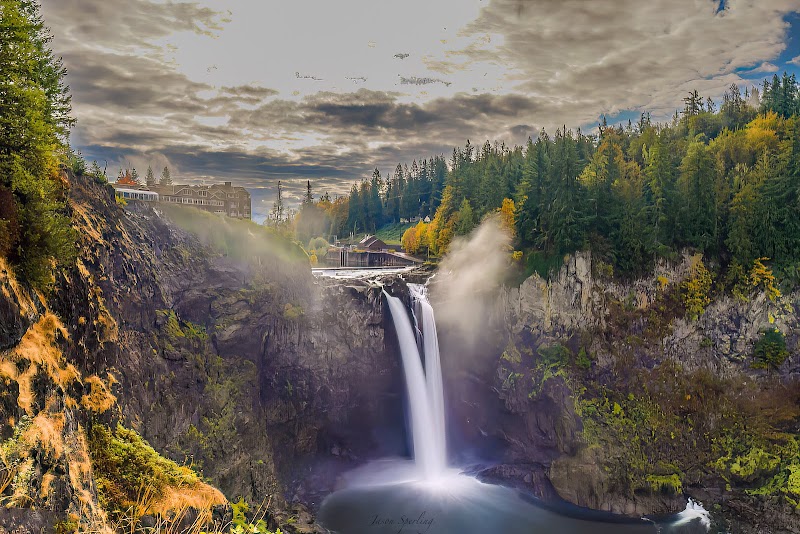Mastering Comfort and Safety: Adult Three-Wheel Triking Through Seattle, Washington
Experience Seattle uniquely by mastering comfort and safety on a three-wheeled adult trike. From navigating its rolling hills to exploring the waterfront trails, this guide offers practical tips and route insights for confident, enjoyable rides throughout the city.
Choose the Right Tires
Opt for durable, puncture-resistant tires that handle both pavement and light gravel for versatile Seattle terrain.
Optimize Your Seat and Handlebars
Adjust your seat height and handlebars to maintain comfort and control on hilly routes like Capitol Hill.
Bright Gear and Lights
Wear high-visibility clothing and use front and rear lights to stay visible in shaded parks and rainy conditions.
Plan Your Route During Off-Peak Hours
Ride during quieter traffic times to navigate Seattle streets safely and enjoy calmer greenway experiences.
Mastering Comfort and Safety: Adult Three-Wheel Triking Through Seattle, Washington

Adult Trike
1-30 Day Rentals • All Ages • Riders 5’-2’ to 6’-5”
Discover the slow-paced joy of cruising Marco Island on a comfortable adult trike. Perfect for all ages, this activity blends scenic views with effortless, eco-friendly fun—ideal for making lasting memories in Florida’s Gulf Coast.
Navigating Seattle’s diverse streets and parks on a three-wheeled adult trike combines urban exploration with physical activity, but comfort and safety remain paramount. These trikes, with their stability and ease of use, offer a unique way to engage with the city’s vibrant neighborhoods and waterfronts without sacrificing balance or control. Yet, demands of the terrain, traffic, and climate shape how you prepare.
Seattle’s landscape challenges trikers with rolling hills and busy thoroughfares, making a tailored setup critical. A well-padded, ergonomic seat reduces pressure during longer trips, while adjustable handlebars prevent strain across varied routes — from the flat, tree-lined paths of Discovery Park to the steeper climbs near Capitol Hill. Tires designed for mixed urban and trail use soften bumps on cracked sidewalks and gravel.
Safety hinges on visibility and awareness. High-visibility clothing and lights are crucial, especially through shaded greenways or as Pacific Northwest rain creeps in. Anti-slip gloves and a helmet that fits securely protect against the occasional jostle, while a compact toolkit tucked in an easy-to-reach bag prepares you for minor mechanical hiccups.
Route planning in Seattle demands respect for traffic cycles and pedestrian zones. The Burke-Gilman Trail offers a vehicle-free stretch where the trike can stretch its wheels without interruption, winding along the waterfront with views that dare you to pause. Meanwhile, city streets require vigilance to merge smoothly with bike lanes, respecting the pulse of the city. Consider timing rides outside rush hours to ensure a calmer, more controlled experience.
Hydration and breaks are not negotiable. Seattle’s temperate climate can mask dehydration risk; bring water and stop at local cafes or parks, letting the city’s ever-present evergreen sentinels watch over your rest. The steady Seattle drizzle might blunt your adrenaline but adds rhythm to your ride — the sound of rainfall tapping on leaves pushing you forward.
Ultimately, optimizing comfort and safety while triking through Seattle is an active partnership with the city's dynamism and its natural elements. Respect hill gradients, adjust your gear to the weather’s temperament, and stay alert to both the urban choreographers and nature’s subtle cues. When these align, your three-wheeled adventure becomes not simply transport but a seamless engagement with Seattle’s fiercely alive streets and trails.
Nearby Trips
All Adventures
Boat Charters
Water Activities
Adventures near Seattle
Discover the unique and memorable adventures that make Seattle special.
Frequently Asked Questions
What terrain can I expect when triking in Seattle?
Seattle features a mix of flat waterfront trails like the Burke-Gilman and steeper hilly streets near Capitol Hill. Surfaces range from paved bike lanes to compact gravel in some parks.
Are three-wheeled trikes allowed on Seattle’s bike trails?
Yes, trikes are permitted on most bike trails including the Burke-Gilman Trail and Discovery Park paths, but watch for pedestrian traffic and obey trail etiquette.
How do I stay safe in busy city traffic on a trike?
Wear high-visibility clothing, use lights, signal intentions clearly, and choose quieter streets or off-peak times to reduce exposure to heavy traffic.
What should I do if it rains while I’m out on my trike?
Slow down to prevent slips, avoid painted road markings that get slick, and wear waterproof gear. Stopping at a nearby cafe to wait the rain out is often the best move.
Where are the best spots for triking with scenic views in Seattle?
Discovery Park offers forested paths and sweeping Puget Sound vistas, while the Burke-Gilman Trail hugs Lake Washington with water views and cityscapes.
Can I carry gear or groceries on a three-wheeled trike?
Most adult trikes feature cargo racks or baskets, making them practical for errands. Just balance your load to maintain stability.
Recommended Gear
Ergonomic Seat Cushion
Reduces pressure and fatigue during long rides, especially important on varied Seattle terrain.
Waterproof Jacket
Keeps you dry during sudden Pacific Northwest showers without overheating.
LED Bike Lights
Improves visibility during low-light hours and gloomy conditions common in Seattle's winters.
Multi-Tool Kit
Prepares you for quick mechanical fixes like tire inflation and chain adjustments on the go.
Local Insights
Hidden Gems
- "The secluded Cove Park, perfect for quiet pauses overlooking Elliott Bay."
- "Interlaken Park trails where forest shadows provide a cool respite."
Wildlife
- "Kingfishers darting by waterfronts."
- "Occasional bald eagles perched in tall evergreens."
- "Grey squirrels active in urban parks."
History
"Seattle’s trike routes trace paths once followed by indigenous peoples and early settlers, with some greenways paralleling historic logging railroads."
